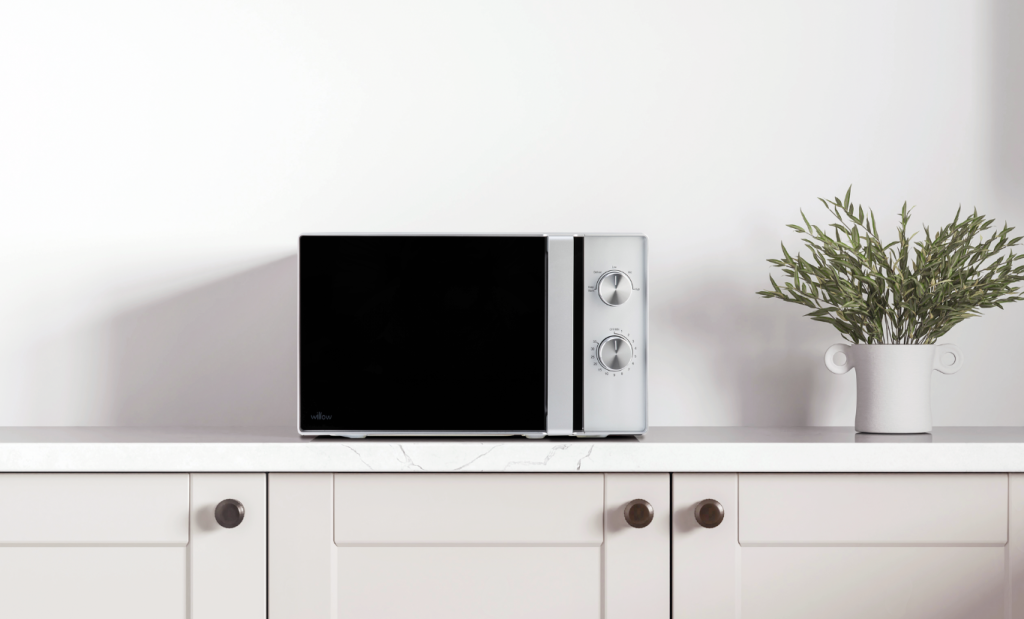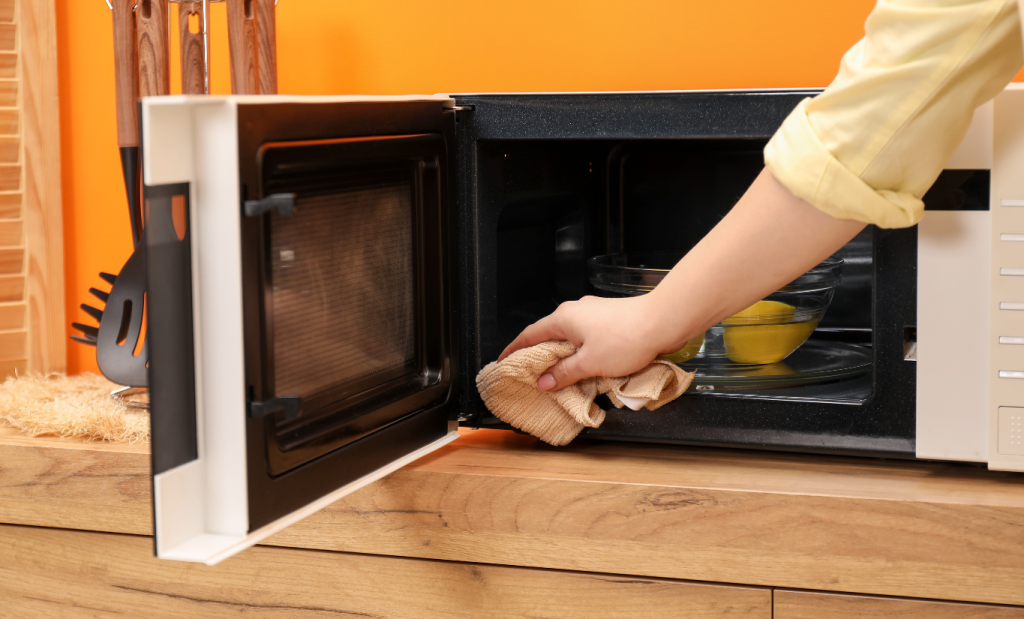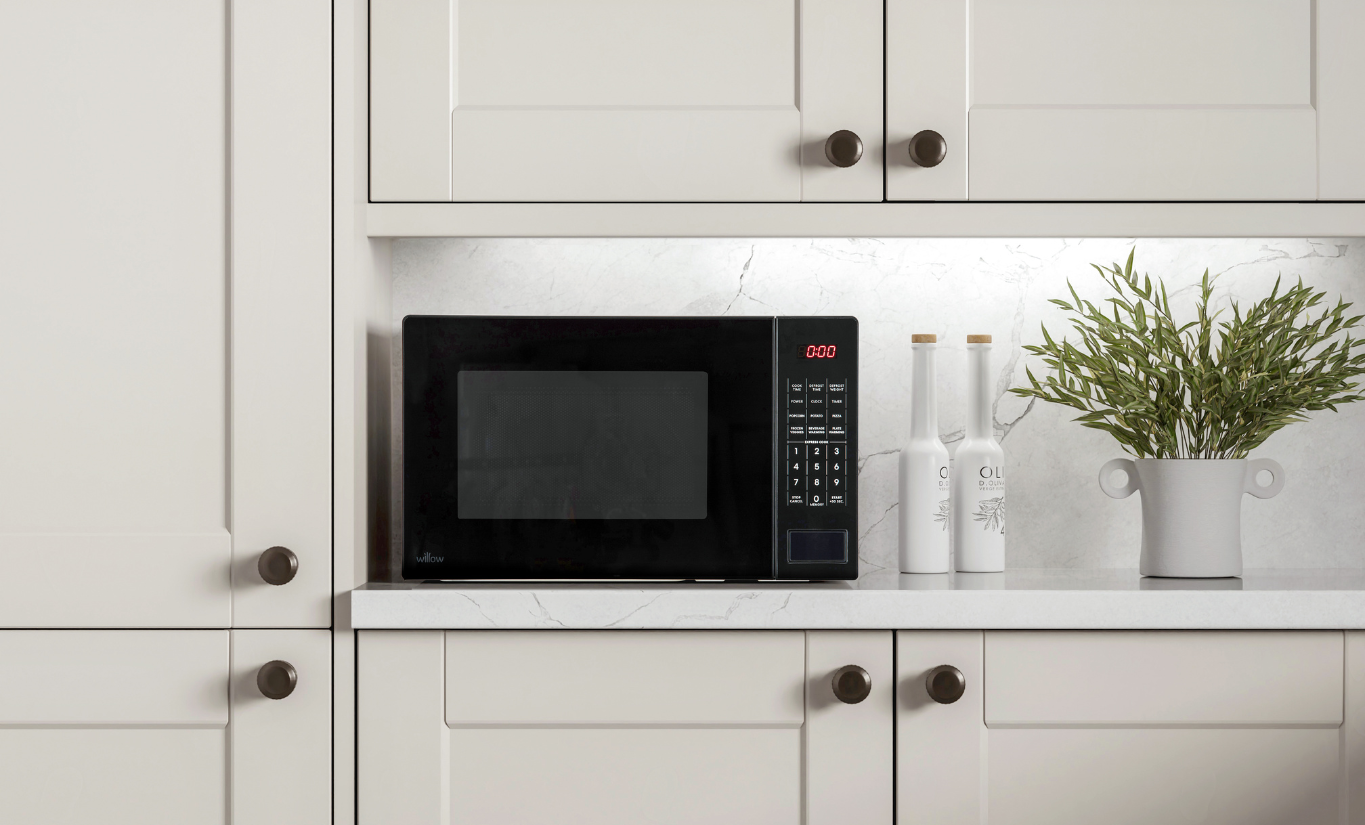Everything you need to know about microwaves
Microwaves are all about convenience. You’d be hard pressed to find a kitchen in the UK that doesn’t have one. In 2018, a survey found that 93% of households in the UK own a microwave oven. This was a huge increase from 1994 when the survey was started when only 67% of households owned one. This may be down to people believing that the radiation from microwaves is dangerous, however these myths have now been debunked.
What are microwaves used for?
Microwaves can be used for a large variety of tasks and once you’ve invested in one, you’ll wonder how you ever lived without one before!
Cooking
If you lead a busy lifestyle, then microwave meals can be a lifesaver. They’re quick and convenient to cook and are a great way to ensure you’re getting nutrition without spending hours preparing a meal. Many people used to believe that microwave meals were unhealthy, but that is not the case anymore. You can easily find healthy meal options in most supermarkets. Some of the most popular types of microwave meals include rice, instant noodles, pasta dishes, curries and British classics such as shepherd’s or cottage pie.
Reheating Food
Again, if you have a very busy lifestyle then you may find that you need to reheat food. A lot of people like to meal prep - they’ll batch cook a meal and separate it into portions which can be reheated when needed. These can be kept in either the fridge or freezer for convenience. Microwaves are also a great way to reheat any leftover takeaways - some even believe that a Chinese takeaway tastes better when reheated the next day!
Defrosting
Most microwaves will have a defrost function. This works by reducing the power to thaw out food evenly and safely. The defrost function is commonly used to defrost frozen items such as meat, poultry or fish. You should always consult your user manual to make sure you understand the settings.
Melting Ingredients
If you’re baking and need to use melted ingredients such as butter or chocolate, using a microwave is much more convenient than a bain marie. You just need to ensure you heat it up in short bursts and stir regularly to prevent anything burning.
Popcorn
If you’re a fan of freshly cooked popcorn, then you might already know how easy it is to make it in a microwave. A lot of brands offer microwaveable popcorn bags which are so convenient and easy to use.
Sterilising Baby Items
Any parents will know the importance of sterilising baby items such as bottles. Some baby brands offer steam sterilisers that are for use in a microwave which makes sterilising bottles quicker and easier.

What is the best type of microwave for home use?
This all depends on your specific needs as there are many different types of microwave ovens available to purchase.
Countertop
The most popular type you will find in a UK kitchen is a countertop microwave. These are often favoured as they are compact and lightweight. They don’t need any kind of installation, you just need to ensure that there is an electrical socket nearby. They can be placed on any flat surface in your kitchen and can easily be moved if needed. These are often the cheapest microwaves that are available, but you don’t have to compromise on quality. Home Feeling offer both manual and digital microwaves for under £80 from Willow Appliances.
Integrated
Integrated or built in microwaves are usually chosen by anyone doing a kitchen renovation who prefers a more minimal, sleek and seamless look. They are installed in a fixed location, cannot be moved around and save on countertop space.
Microwave and Grill Combination
As the name suggests, this appliance combines all of the usual features of a microwave with a grill function. This is great for anyone who doesn’t already have a grill and doesn’t want to buy one separately.
Convection
Convection microwaves combine all of the features of a standard microwave, along with a convection heating element and a fan which circulates hot air. This means that these appliances can offer even more versatility with the options of baking, roasting and crisping. They’re not designed to completely replace a standard oven, but they do offer similar features. Convection microwaves are typically the most expensive type of microwave on the market.
How much does it cost to run a microwave?
In the UK, depending on the power rating and the cost of electricity in your area, it typically costs around 24p to 50p per hour to run a microwave. To work out the running cost, you need to know what the power output is in watts and how much you are paying for your electricity per kWh.
First of all, you need to convert the wattage of the microwave from watts to kilowatts (kW) by dividing it by 1000:
700 watts ÷ 1,000 = 0.7kW
You then need to find out how much the electricity costs you and multiply this amount by the kilowatts. If you’re currently paying 30p per kWh then the calculation would be:
0.7 x 30 = 21p
This calculation shows that your microwave costs 21p per hour to run. To find out how much it costs per minute, simply divide the 21p by 60:
21p ÷ 60 = 0.35p
There are many online calculators that can work this out for you if you just input the right information.

What is the best way to clean a microwave?
If you’re not careful, microwaves can easily become dirty. To avoid any unpleasant odours and burnt on food, you should regularly clean your microwave. The best way to do this is to first of all ensure it is turned off.
Remove the turntable and clean this separately with warm, soapy water. You can then wipe down the inside of the microwave with a cloth and warm soapy water. If you need a more effective clean, you can use white vinegar. Add a few tablespoons of the white vinegar to a bowl of water and mix. Place the bowl in your microwave and heat on full power for 5 minutes. Then let the bowl stand for 15 minutes so that the steam can work it’s magic. After 15 minutes, wipe down the inside of the microwave with a cloth.
Before you put the turntable back in the microwave, make sure you have dried everything off.
How long should a microwave last?
As long as it is well looked after, a microwave should last around 8-10 years. Willow microwaves come with a two year manufacturer's warranty for peace of mind.

